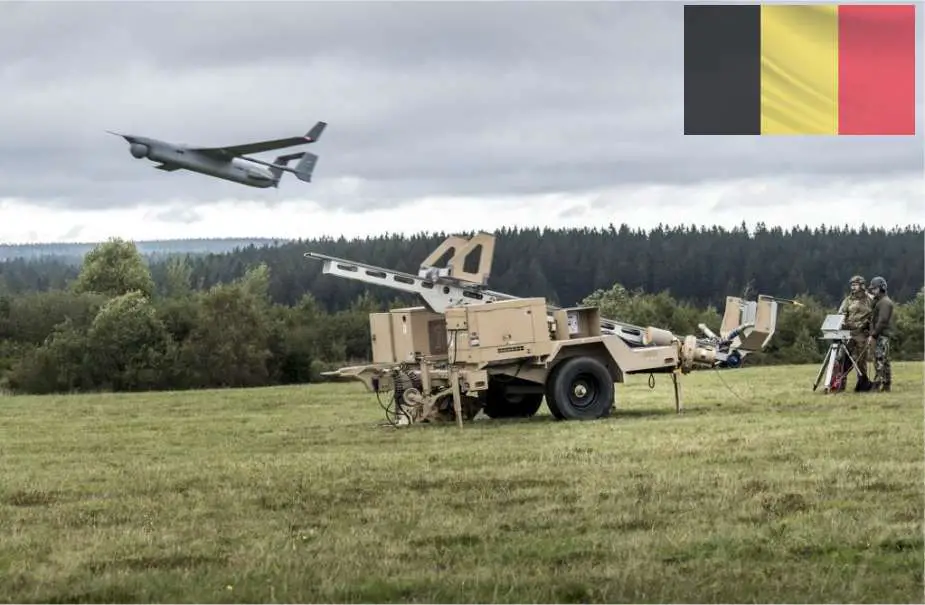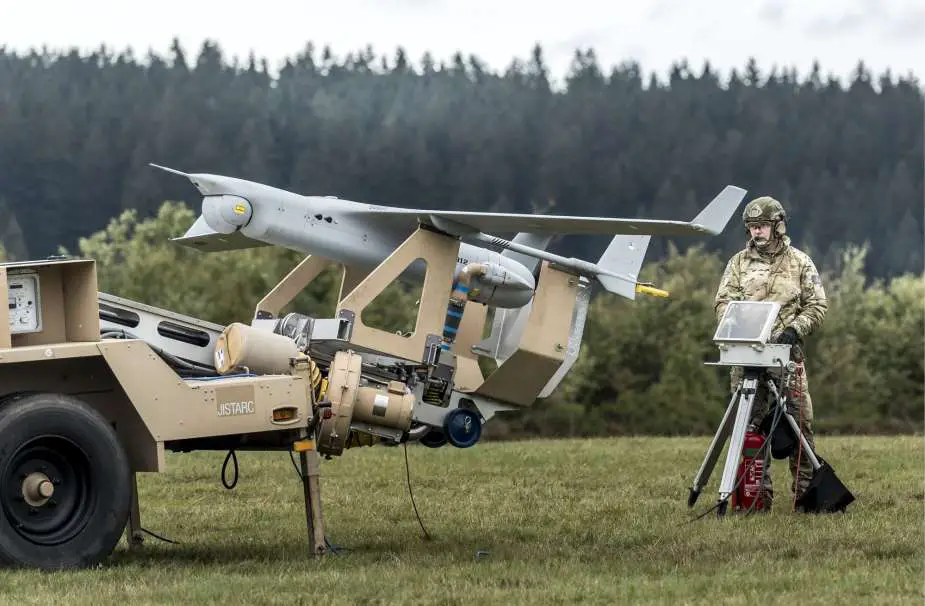Breaking news
Belgian Defence gets a boost with US X-300 Integrator drone inaugural flight.
As reported by the Belgian Defense, on September 20, 2023, the 1st platoon of the ISTAR Battalion from the Belgian Armed Forces successfully conducted the X-300 Integrator's inaugural demonstration flight at Camp Elsenborn, Belgium, in the presence of Major General Jean-Pol Baugnée, Commander of the Belgian Land Component. A typical platoon comprises approximately a dozen personnel with various roles integral to the operation of the Integrator system. The ISTAR battalion has its flight simulator facility in Heverlee.
Follow Army Recognition on Google News at this link

The 1st platoon of the ISTAR Battalion from the Belgian Armed Forces successfully conducted the X-300 Integrator's inaugural demonstration flight (Picture source: Belgian Defense)
This development is expected to enhance Belgium's capabilities in countering contemporary threats, as explained by Major General Jean-Pol Baugnée to Army Recognition on July 20, 2023. Anticipated operational milestones include full operational readiness for both platoons by mid-2024 and mid-2025, respectively. The first platoon is set to participate in a large-scale ISTAR exercise in Norway, and the platoons will relocate to the military camp in Lombardsijde, West Flanders, by 2024, necessitating the construction of a new building.
Belgium ordered two Integrator X-300 systems in March 2021 through a collaborative effort with the Netherlands and Luxembourg. The first platoon underwent training at the Joint Intelligence, Surveillance, Target Acquisition, and Reconnaissance (JISTAR) Command of the Dutch Landmacht in 't Harde, which serves as the pilot country for this capability. These Belgian systems were procured through an existing Dutch contract with Boeing Insitu and are officially registered in the Netherlands.
In June of the same year, Belgian military personnel participated in joint training exercises with their Dutch counterparts during the Unified Torch exercise in Deelen. This marked the first solo flight operations for Belgian operators after a year-long training program and a final examination in Aruba. The Integrator systems were also showcased to the public during Belgium's National Day on July 21st, with a visit from King Philippe at the ISTAR battalion's exhibition stand.
In April 2021, the Benelux countries (Belgium, the Netherlands, and Luxembourg) signed a Memorandum of Understanding for the acquisition of seven RQ-21 Integrator systems, also known as Integrator X-300. These acquisitions include three systems for the Netherlands, two for Belgium, and two for Luxembourg. One of the Luxembourgish systems is designated for training and exercises.
The Integrator systems can be deployed autonomously under Belgian command, but for extended deployments, a multinational framework will be essential.
The X-300 Integrator, produced by Boeing-Insitu, features a twin-boom design and includes a launch and recovery installation, a ground station, and an exploitation system. Its primary mission is to collect information through photography and filming, making it adaptable for deployment on land and from ships. It comes equipped with a combined electro-optical and infrared camera for surveillance.
The Netherlands has procured three Integrator systems and three simulators, actively utilized by the 107 Aerial Systems Battery of the Joint Intelligence Surveillance Target Acquisition Command (JISTARC).
The Integrator, in its basic variant, has a cruising speed of 100 km/h, a top speed of 148 km/h, a maximum altitude of 4.572 m, an empty weight of 34 kg, and a maximum takeoff weight of 61.2 kg, while measuring 2.2 m in length and 4.8 m in width.
The Integrator is designed to be a modular, flexible, and multi-mission Unmanned Aircraft System (UAS) capable of operating on land and at sea. It has a payload capacity of 18 kg for customization to support various operational needs. Its runway-independent design allows it to operate from austere land-based sites and maritime environments.
The Integrator offers a range and endurance that enable detection, classification, and tracking. Its encrypted command and control data link provides line-of-sight operating beyond 50 nautical miles (92.6 kilometers) and electromagnetic shielding for customized communications and radio frequency sensor payloads. It complies with NATO and industry standards, facilitating interoperability.
The system is transportable on various platforms, including ships, cargo aircraft, cargo helicopters, and vehicles. With a track record of over 1.3 million operational hours and deployment at 50 global sites, the Integrator is known for its reliability in demanding missions.
In addition to its specifications, the Integrator offers an extended range variant with satellite-enabled beyond-line-of-sight (SATCOM BLOS) communications, enhancing data link capabilities for austere locations. It is designed for flexibility with various mission options and customizable payloads, including electronic warfare, ISR (Intelligence, Surveillance, and Reconnaissance), and communications relay, with an onboard power capacity of 350 watts and Ethernet (TCP/IP) for onboard connectivity.

The Benelux countries (Belgium, the Netherlands, and Luxembourg) purchased seven American RQ-21 Integrator systems, also known as Integrator X-300 (Picture source: Belgian Defense)


























